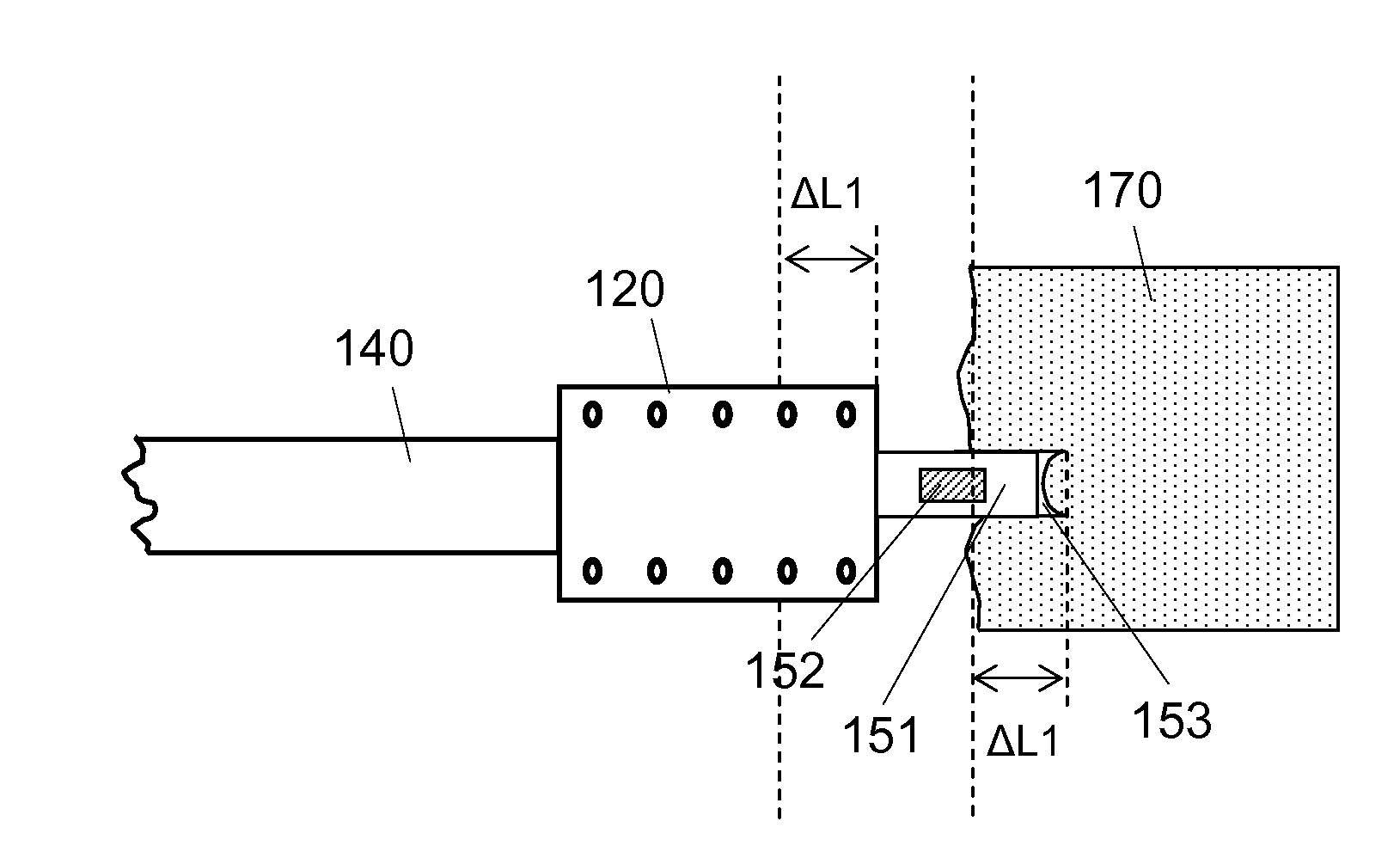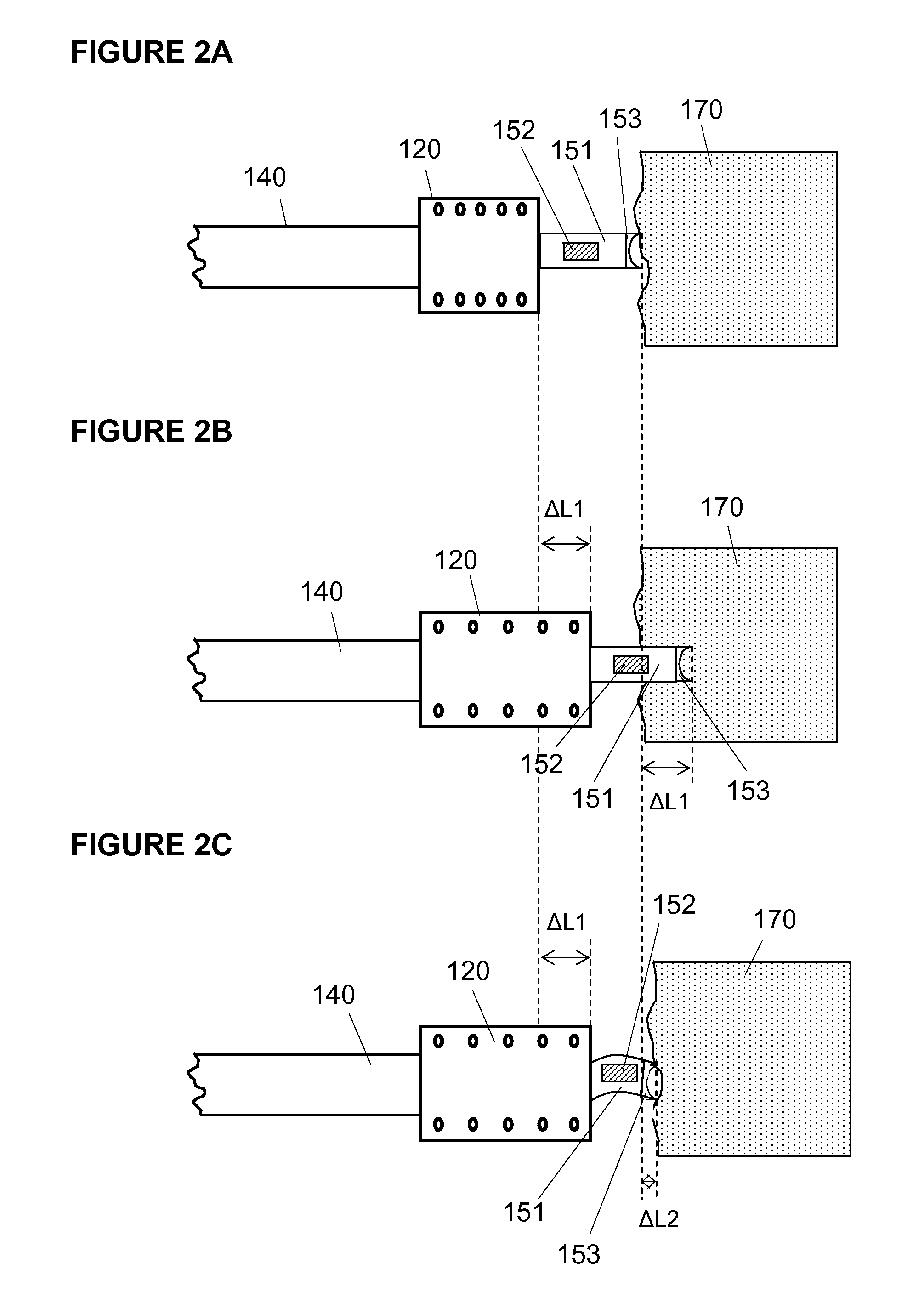Device for traversing vessel occlusions and method of use
a technology of occlusion and device, applied in the field of energy efficient devices, can solve the problems of long procedures with potentially adverse effects on patients, limited success of devices for opening these occlusions, and inability to meet patient needs, so as to improve efficiency, reduce the effect of sensitiveness and more efficient energy transfer
- Summary
- Abstract
- Description
- Claims
- Application Information
AI Technical Summary
Benefits of technology
Problems solved by technology
Method used
Image
Examples
Embodiment Construction
[0025]In order to overcome the mechanical energy loss limitations of prior art devices, the apparatus of the invention uses a distal spring-like element that can store potential energy. The potential energy is loaded and released to kinetic energy at desired frequency by pulling and releasing a flexible pulling member. As used herein, the term “flexible” is intended to mean capable of flexing laterally without any inertia moment, e.g., to accommodate tortuous vessels, but not longitudinally—e.g., the pulling member should be minimally stretchable or extensible lengthwise. By “releasing the pulling member” is meant that the tension—generated in the pulling member by pulling the pulling member—is released. In parallel to the release of tension in the pulling wire, the potential energy of the spring element is released to kinetic energy. The stored energy of the spring element is released to the surrounding tissue or occlusion via a vibratable member which impacts the occlusion. An adv...
PUM
 Login to View More
Login to View More Abstract
Description
Claims
Application Information
 Login to View More
Login to View More - R&D
- Intellectual Property
- Life Sciences
- Materials
- Tech Scout
- Unparalleled Data Quality
- Higher Quality Content
- 60% Fewer Hallucinations
Browse by: Latest US Patents, China's latest patents, Technical Efficacy Thesaurus, Application Domain, Technology Topic, Popular Technical Reports.
© 2025 PatSnap. All rights reserved.Legal|Privacy policy|Modern Slavery Act Transparency Statement|Sitemap|About US| Contact US: help@patsnap.com



